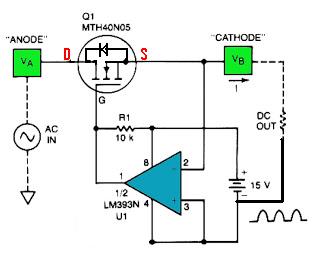manishanand14
Full Member level 4
- Joined
- Sep 3, 2011
- Messages
- 203
- Helped
- 10
- Reputation
- 20
- Reaction score
- 9
- Trophy points
- 1,308
- Location
- Bangalore ,India
- Activity points
- 2,572
Follow along with the video below to see how to install our site as a web app on your home screen.
Note: This feature may not be available in some browsers.

The trick is the MOSFET is now operating in the "Triode" mode where the channel acts like a resistor. Current can flow in either direction.

You are right that source-substrate connection isn't required by MOSFET operation principle, nevertheless it's effectively unavoidable in power MOSFET design, a bit more than a habbit.The internal diode isn't even strictly necessary. There's a PN junction between the source-drain channel and the substrate, and power MOSFET designers are in the habit of connecting the substrate to the source, so you effectively end up with a diode between source and drain.
Oh, oops! pity.You are right that source-substrate connection isn't required by MOSFET operation principle, nevertheless it's effectively unavoidable in power MOSFET design, a bit more than a habbit.
Are you referring to the circuit in post #1? Then the analysis is incorrect. The circuit will work as a synchronous rectifier, at least theoretically. In practice, deriving the control signal from the Vds polarity won't work so well considering comparator offsets. Also the requirement of a floating supply doesn't suggest it as a real circuit solution. Other restrictions have been mentioned by Analog Ground.Drawback: If you put a filter capacitor on output as required in most cases, it will be another story. It will always be conducting.